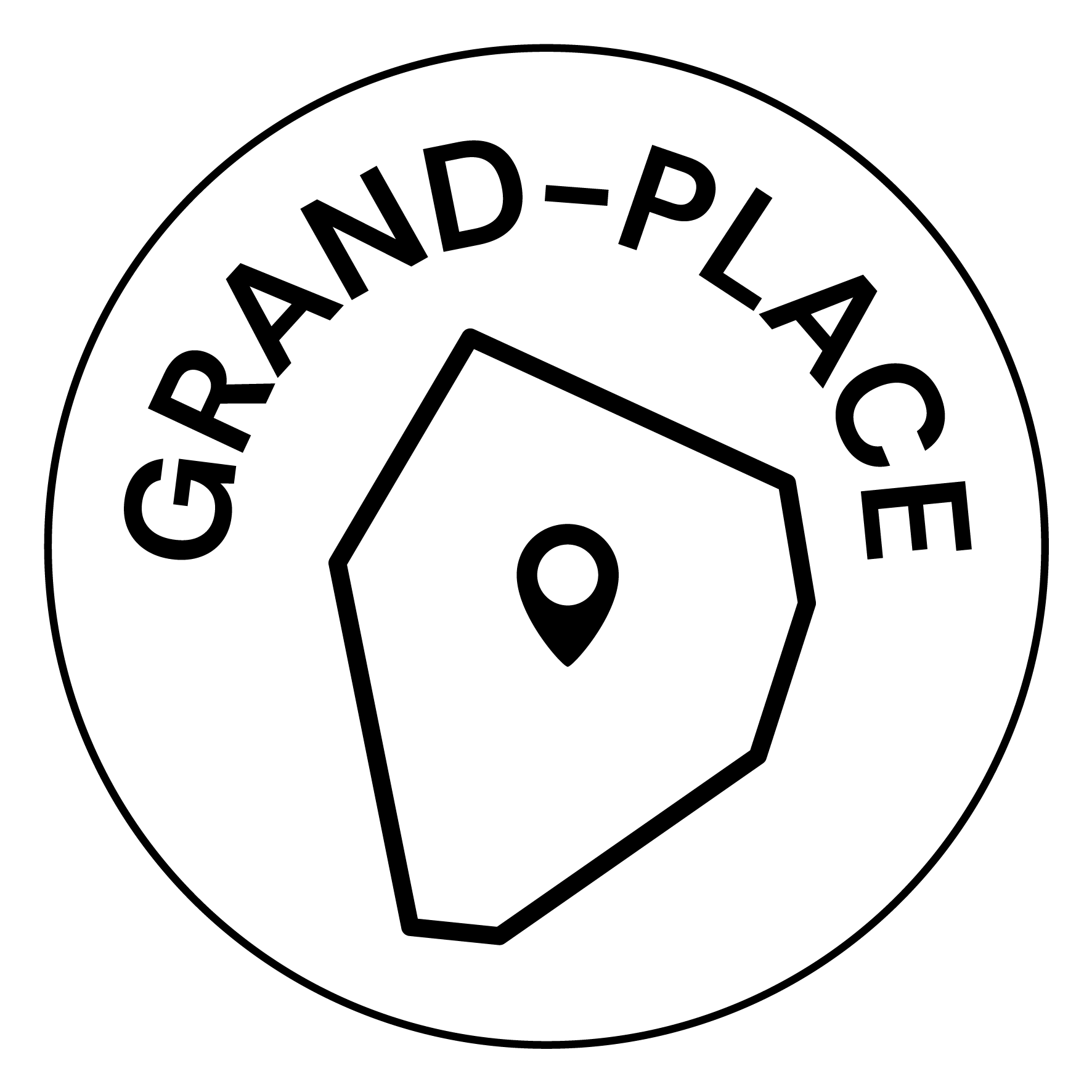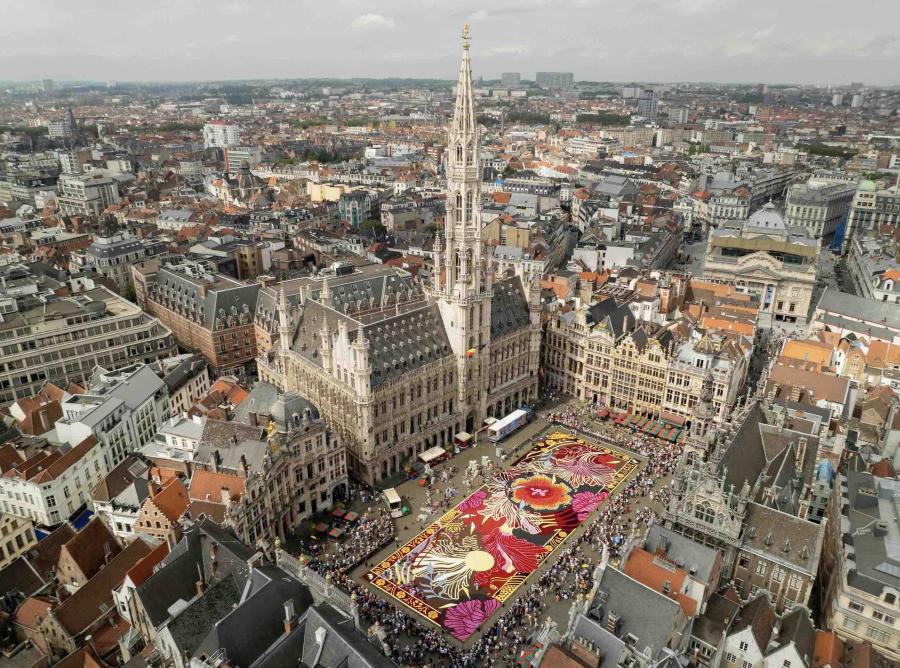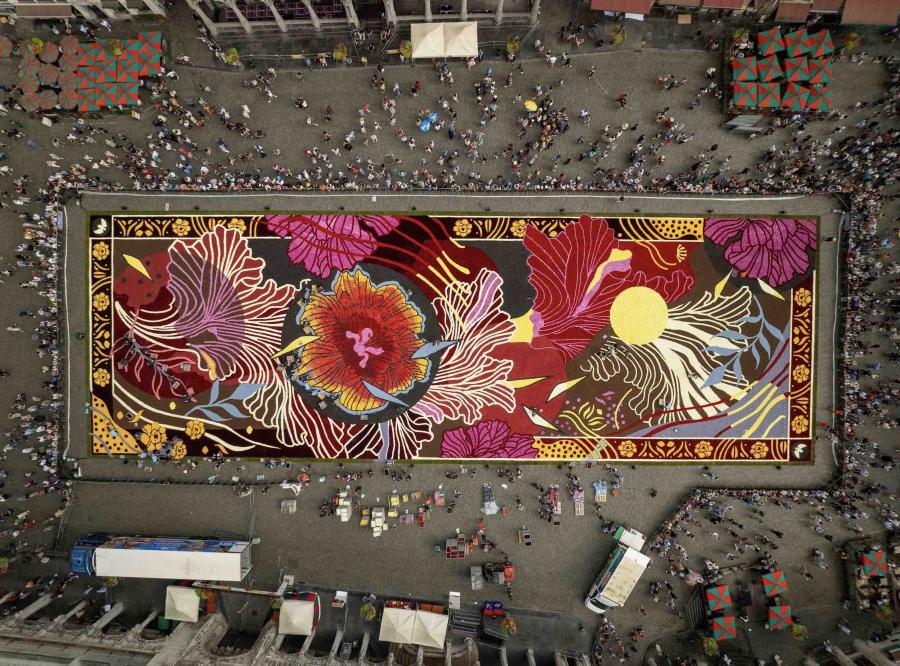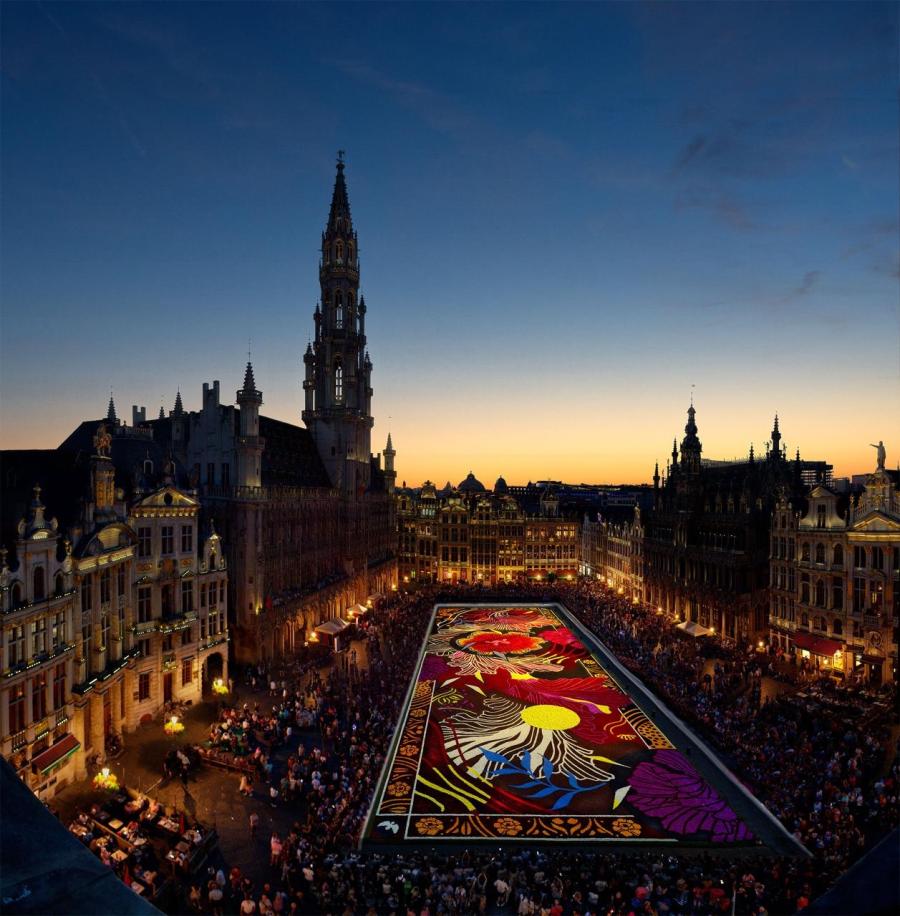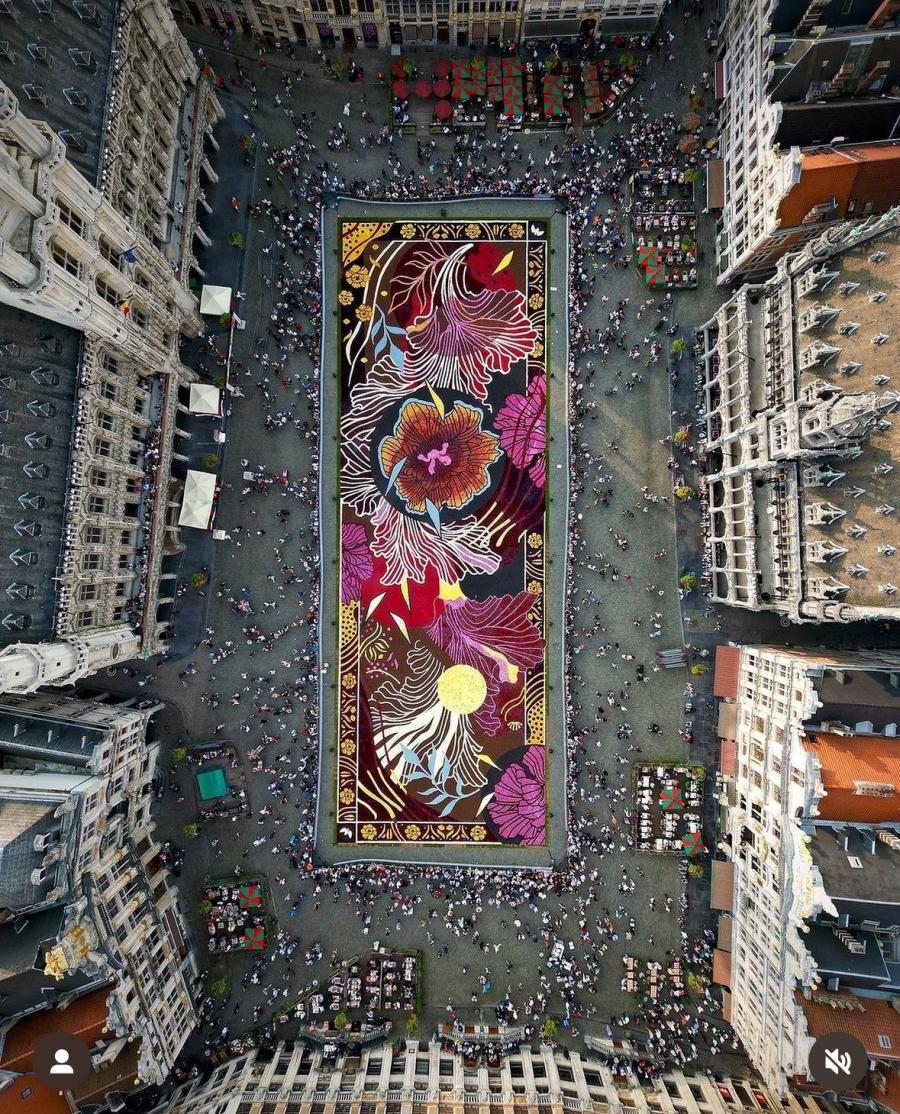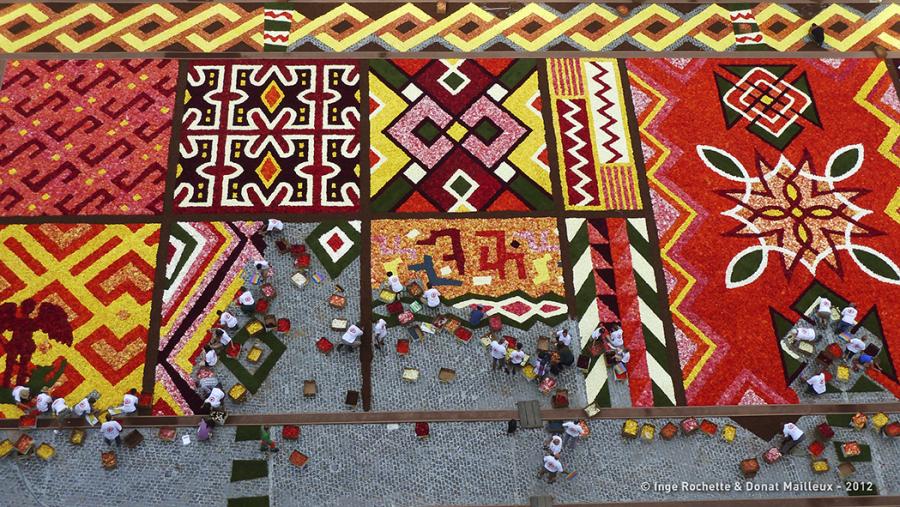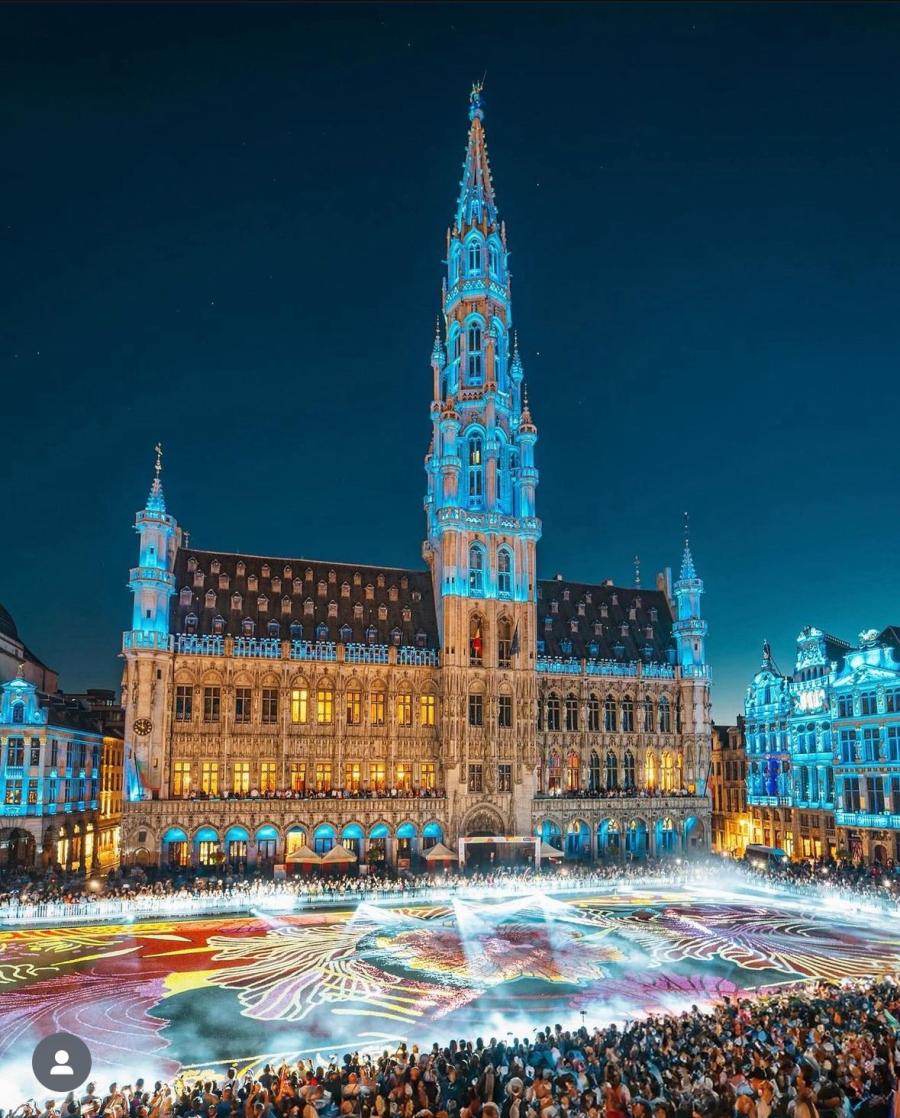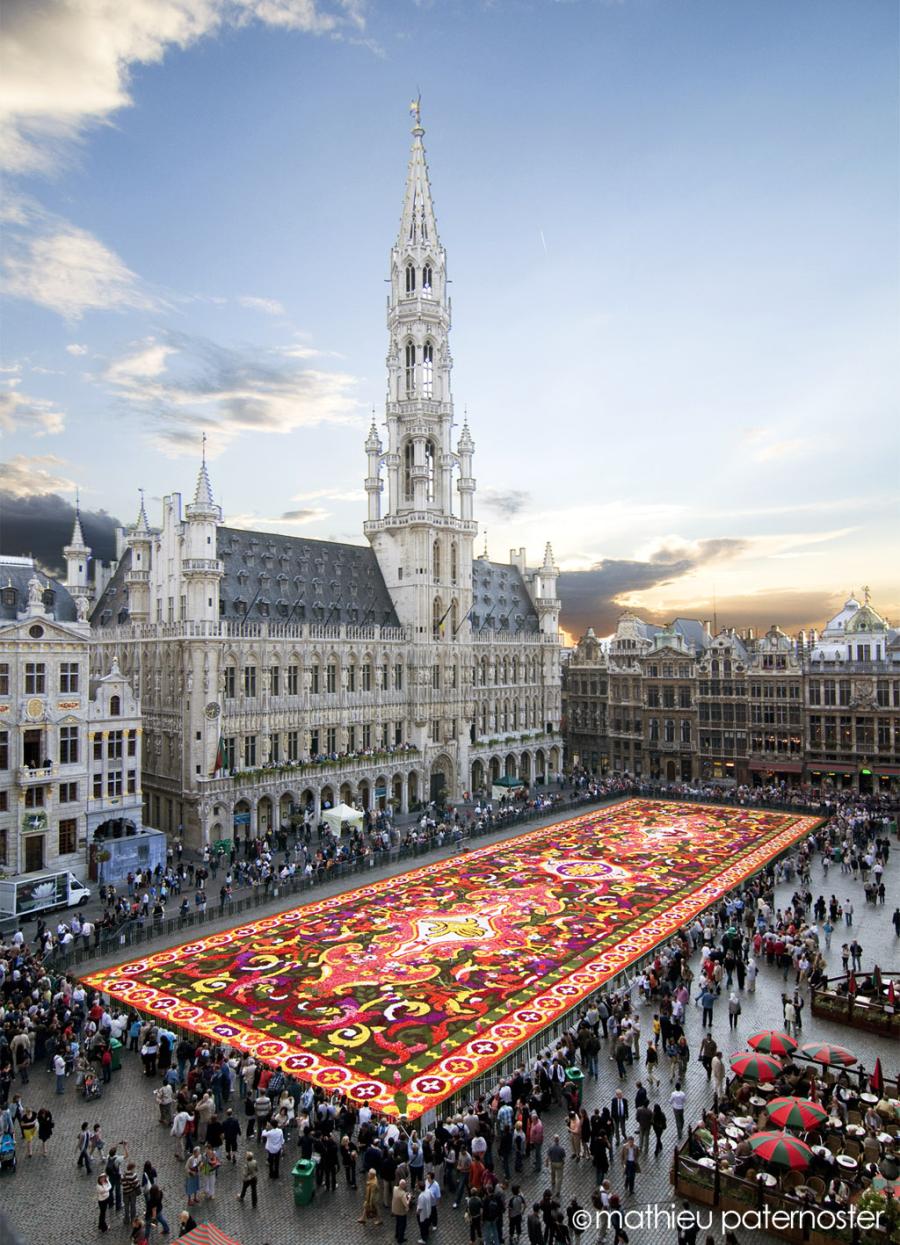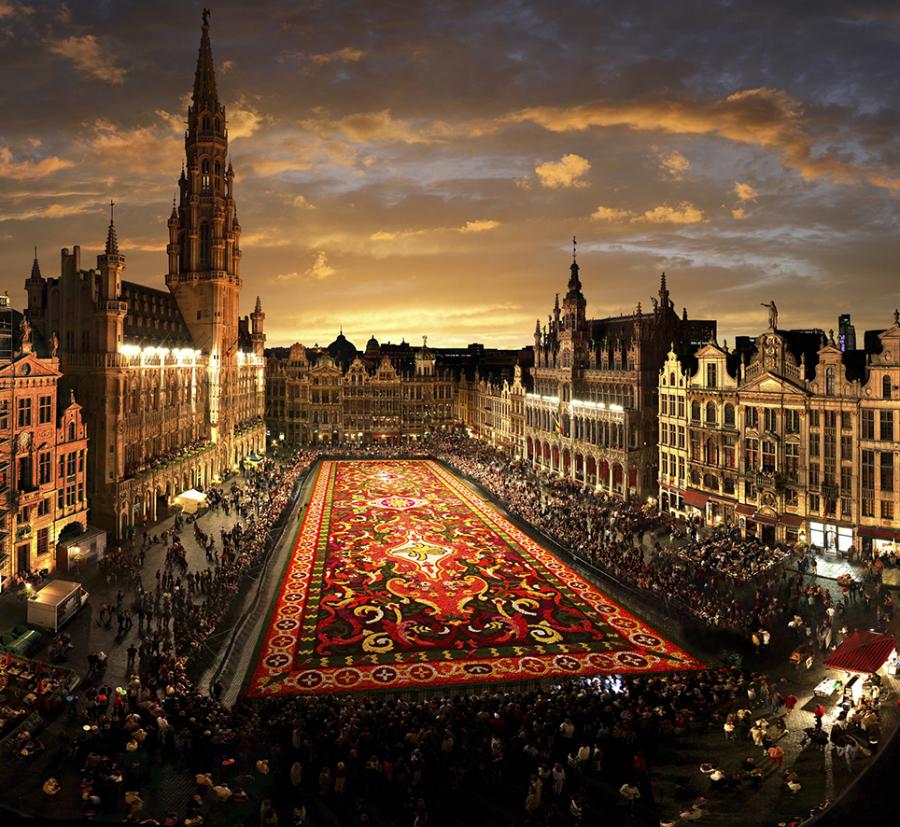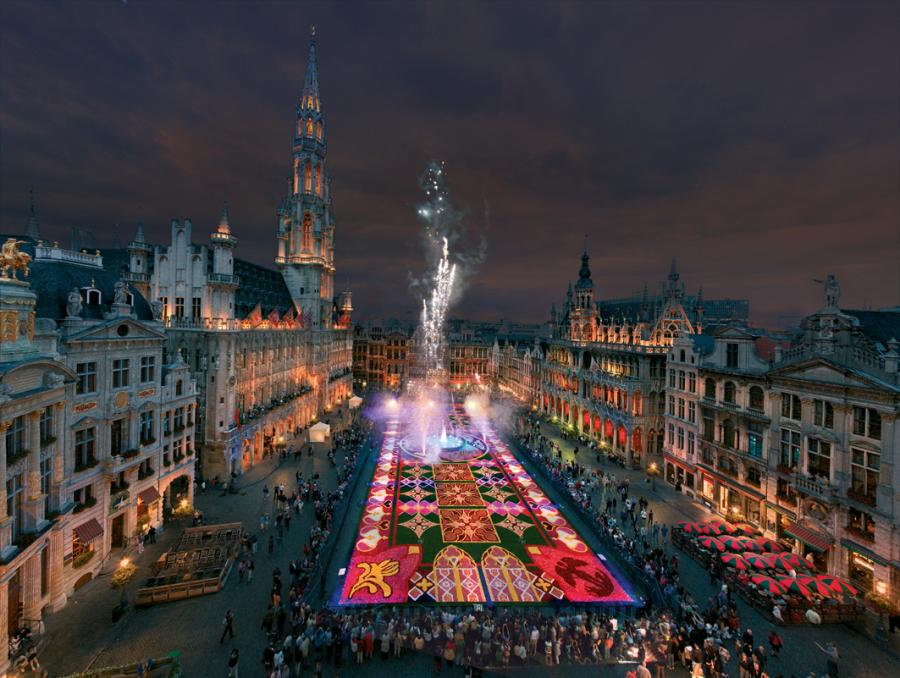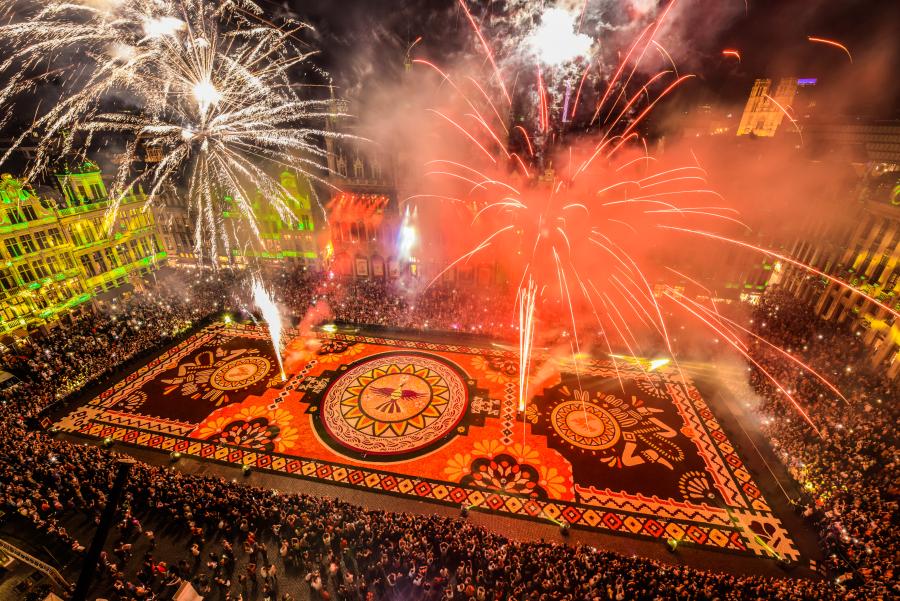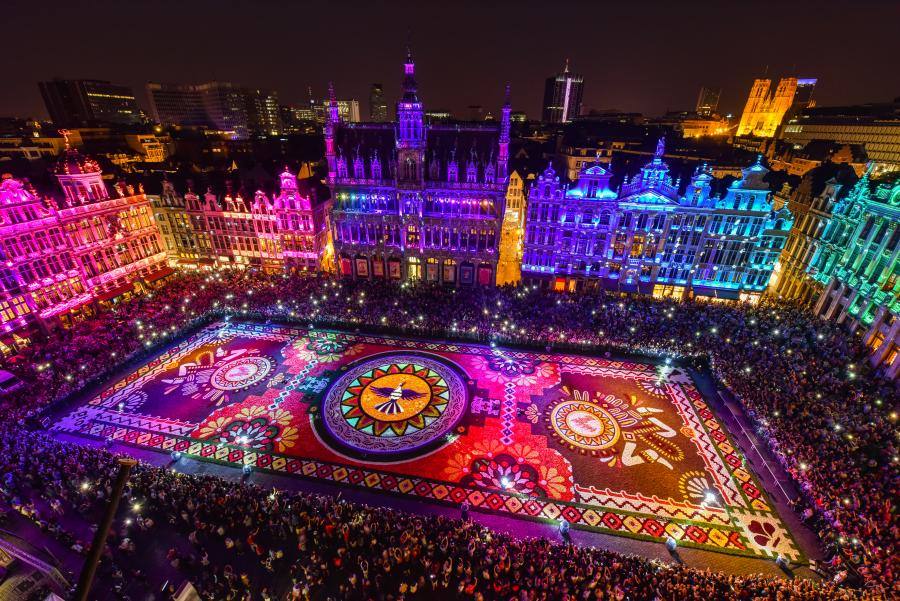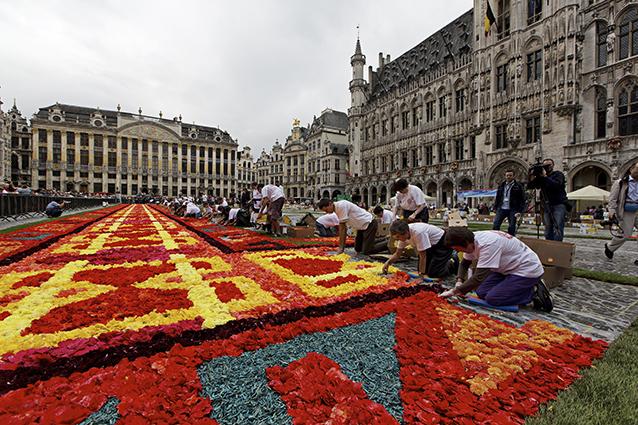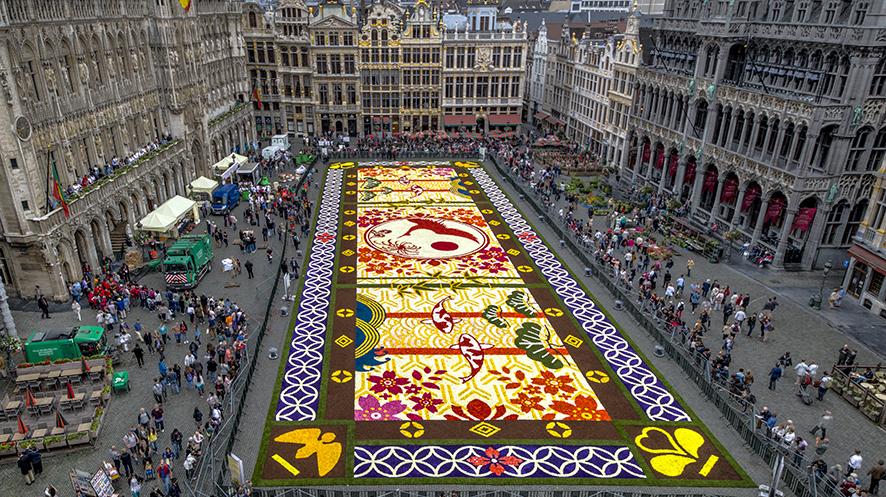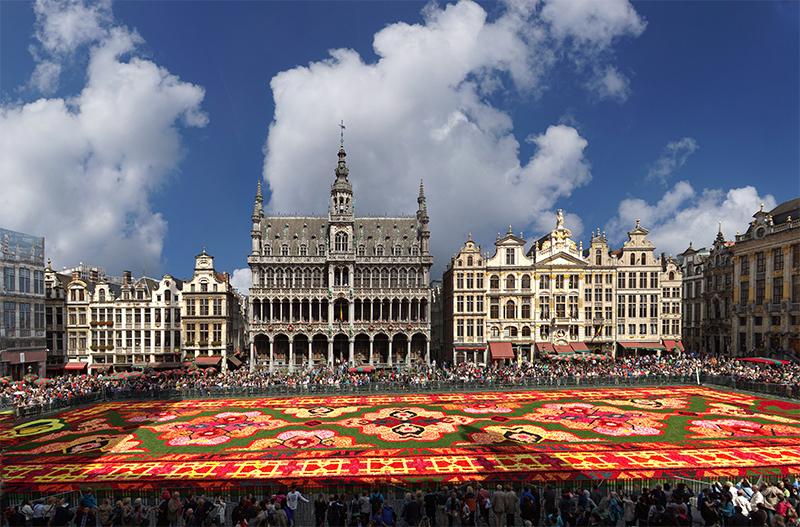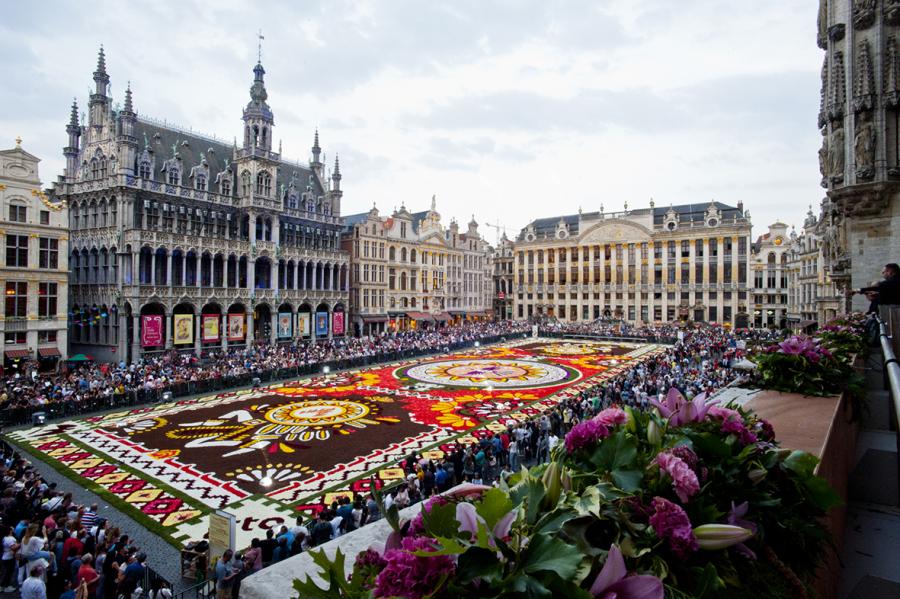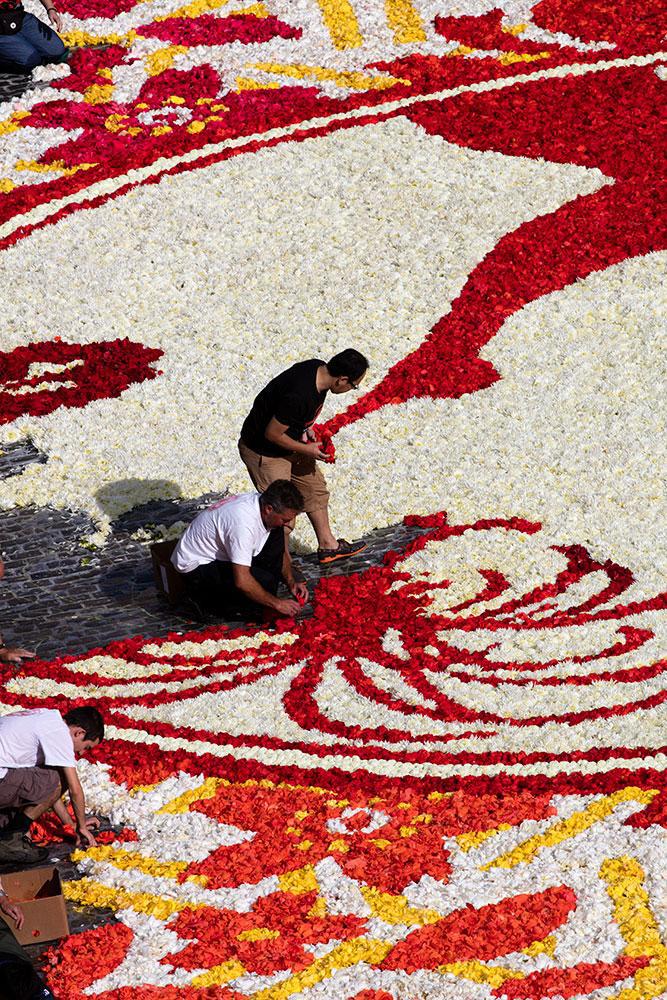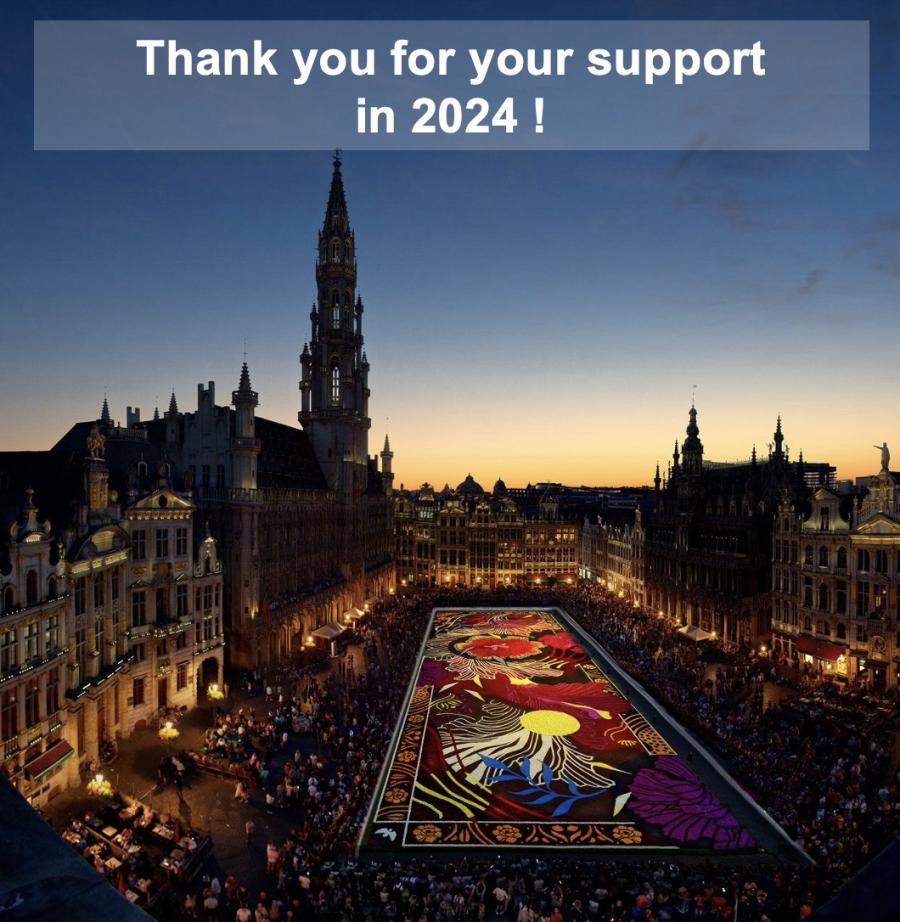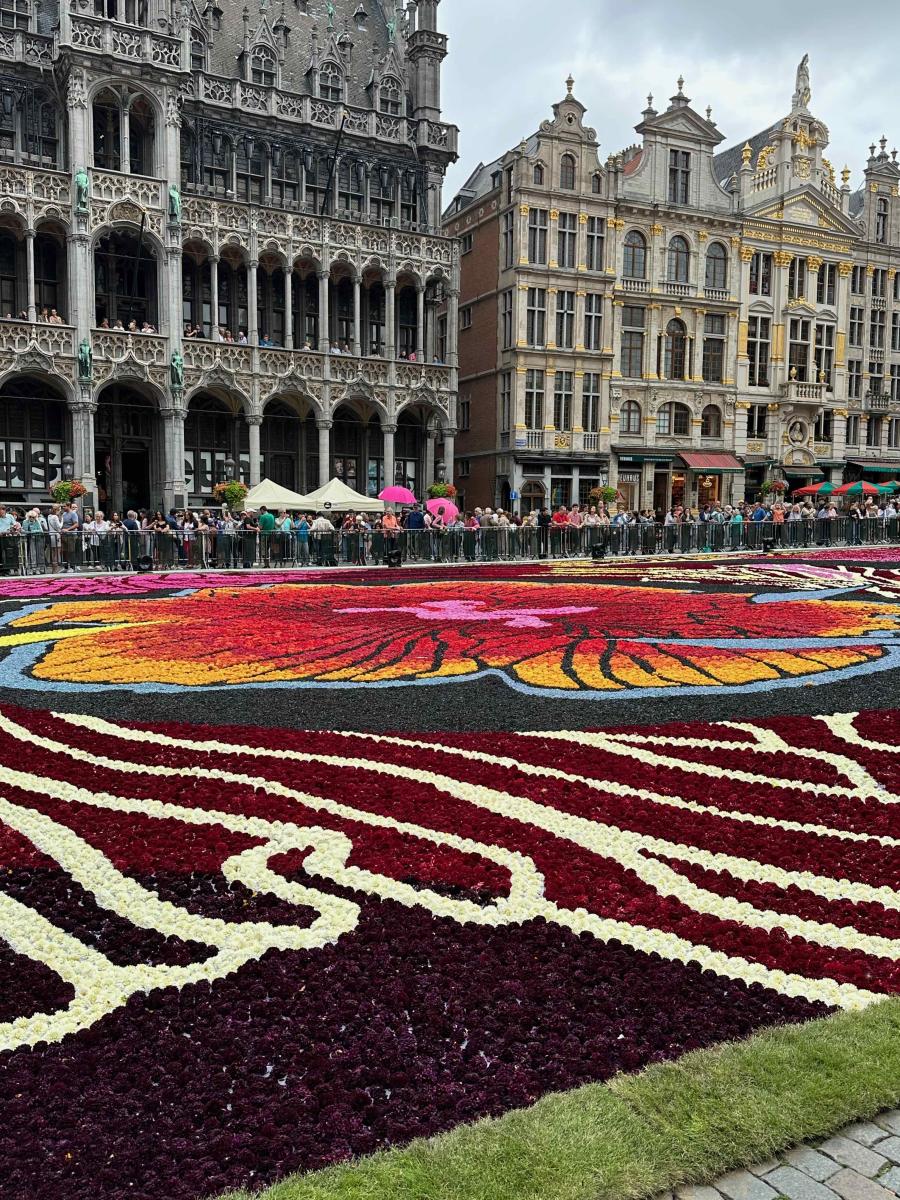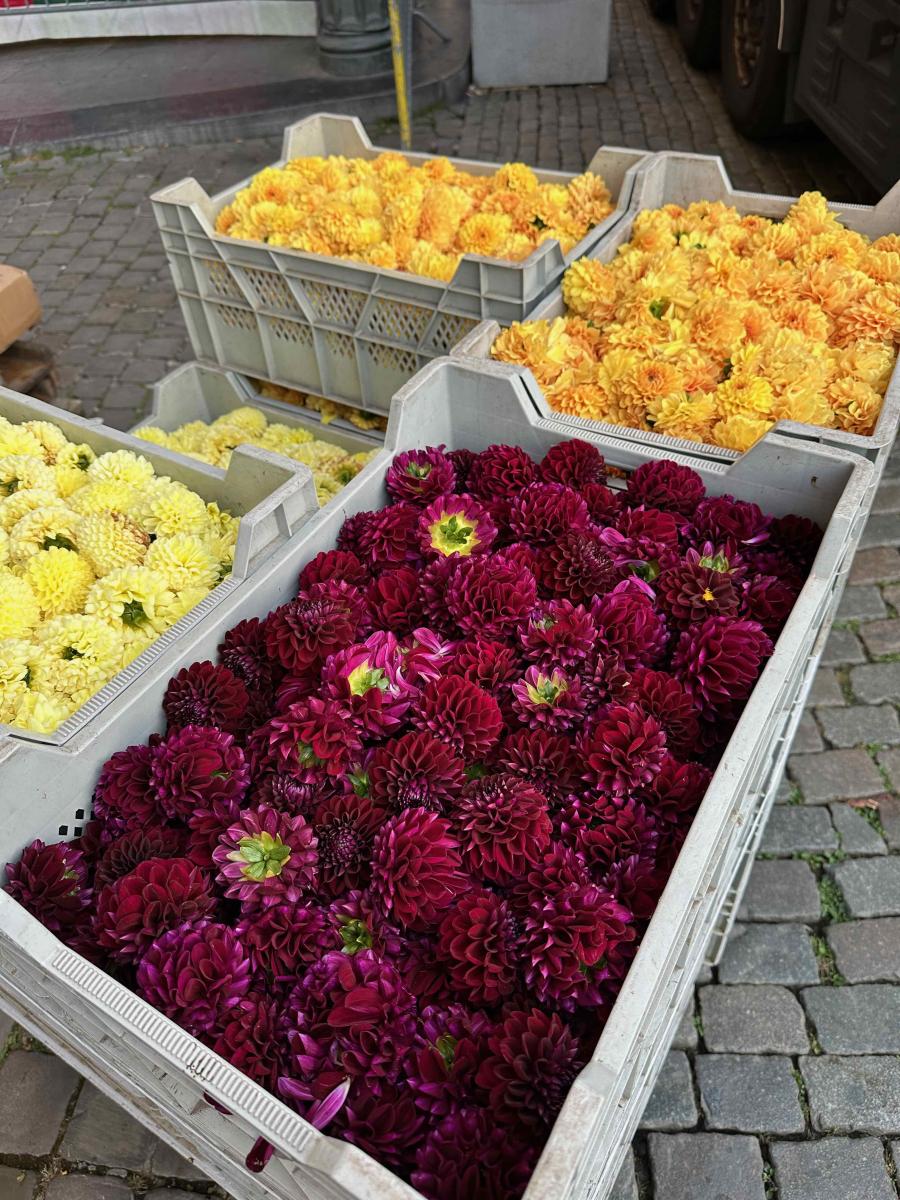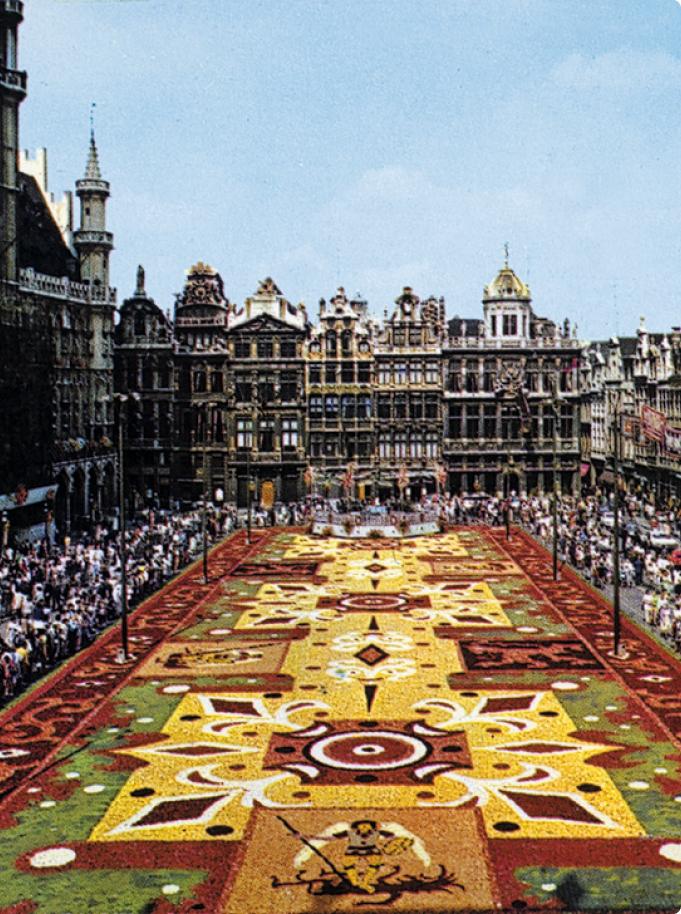A first flower carpet on the Brussels’ Grand-Place in 1971
This was the work of the landscape architect Etienne Stautemasn borns in Zottegen in 1927. A graduate of the Horticultural College of Ghent, he began to create flower carpets in the early 1950’s. Simpler, smaller, these “rugs” were primarily composed of begonias which he loved and with which he worked
ever since. After years of testing and calculations, the team of Etienne Stautemas, together with designer Mark Schautteet, imposed itself as the
specialist in the creation of immense flower carpets, with sophisticated
colours and complicated designs. The team went on to create more than 180
carpets, in Ghent, Bruges, Cologne, Luxembourg, Paris, London, Amsterdam, The Hague, Vienna, Valencia and even Buenos Aires and Colombus (Ohio). But
”nowhere else is the carpet as magnificent and distinguished as on the ancient
and unique Grand-Place of Brussels”.
The Grand-Place, a Unesco world heritage site
This is the historical heart of Brussels. here Gothic style can be seen adjacent
to opulent baroque, neo-classical as well as neo-Gothic. The Grand-Place is
regarded by its admirers as “the most beautiful central square in the world”!
Its construction began in the 15th century, with halls, guild houses and a Town
Hall. It was virtually razed after 3 full days of bombardment by the French
Army in 1695, yet was rebuilt in less than 5 years, notably by the different
guilds. The tower of the Town Hall is 96 metre hight. Every two years, the
heritage jewel. Since 2000 the entire Grand-Place has been listed as a
Unesco world heritage site.



